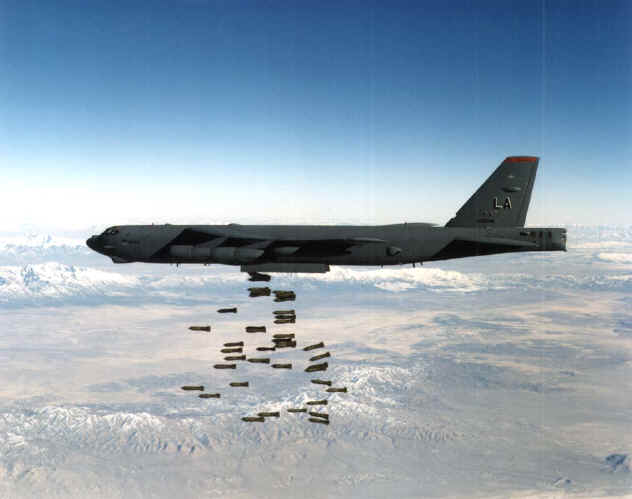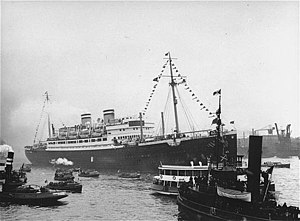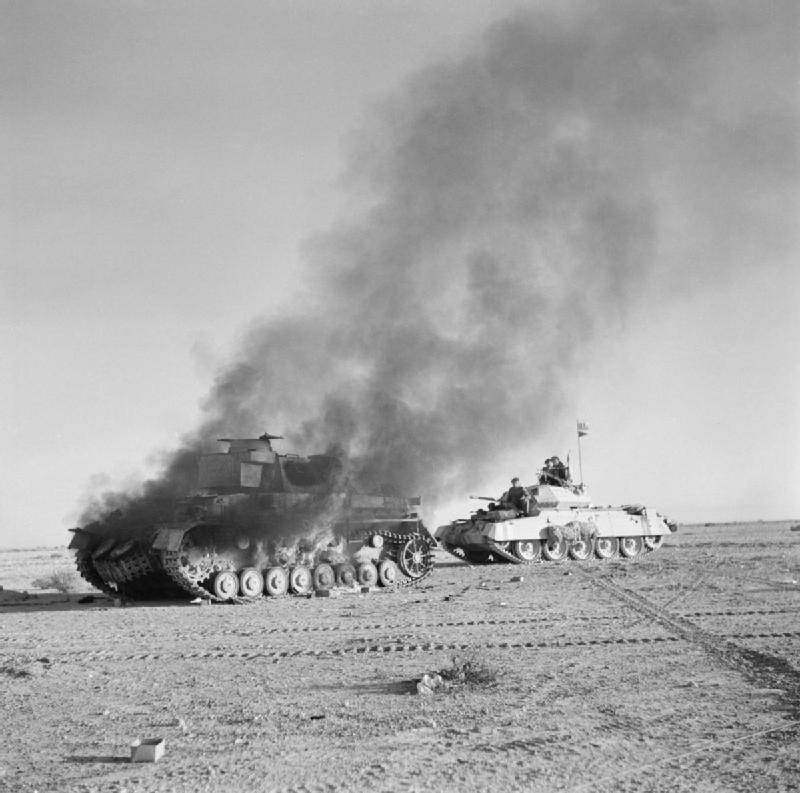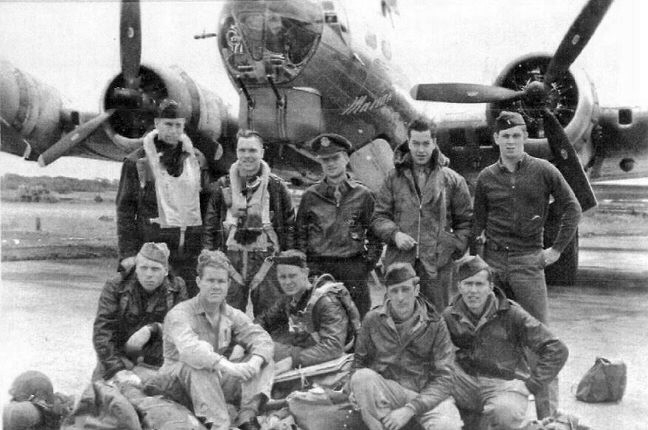
this is a pictuer of a kid who was in a
carpet bomb as you can see he is need
of help




This is a picture of some kids stuck behind the fence of an internment camp. This is a primary source because it was a picture taken at the time in the place that it happened.

This is a picture of an apology letter from the goverment and signed by President Bill Clinton. It was apologizing to the japanese for what had happened to them. It was sent about 50 years after WWII. http://https//coreycr0708.wikispaces.com/file/view/letter.gif
 Picture of "Little Boy" (the bomb dropped in hiroshima) in the bomb pit on "Tinian" before being loaded into "Enola Gay's" bomb bay. (Picture found at Atomic Archive, Full article at Wikipedia.)
Picture of "Little Boy" (the bomb dropped in hiroshima) in the bomb pit on "Tinian" before being loaded into "Enola Gay's" bomb bay. (Picture found at Atomic Archive, Full article at Wikipedia.) On August 6, 1945 at 8:15 a.m. the United States Army Air Forces dropped the "Little Boy" over Hiroshima, Japan the casualties were estimated (by historian Richard Frank) to between 100,000 to 200,000 most were civilians.
On August 6, 1945 at 8:15 a.m. the United States Army Air Forces dropped the "Little Boy" over Hiroshima, Japan the casualties were estimated (by historian Richard Frank) to between 100,000 to 200,000 most were civilians. this image was found at gnosticliberationfront.com
this image was found at gnosticliberationfront.com This image is from pbs.org
This image is from pbs.org -The body of a dead Black man is displayed out in the open on a flat bed truck for other Black men to view as they were being "Interned" at the convention center during the worst riot in US History.
-The body of a dead Black man is displayed out in the open on a flat bed truck for other Black men to view as they were being "Interned" at the convention center during the worst riot in US History. The St. Louis arrived in Havana harbor on May 27, but Cuban officials denied entry to all but 28 passengers. For a week, while the ship sat at anchor in sweltering heat, representatives of the American Jewish Joint Distribution Committee (JDC) negotiated with Cuban president Federico Laredo Brú. The Cuban government rejected the JDC's proposals and forced the ship to leave the harbor. The ship's captain, Gustav Schröder, piloted the St. Louis to the Florida coast in hopes that the U.S. would accept the passengers or that Brú would reverse his decision. The State Department, however, refused to intervene in Cuban affairs, and the Coast Guard denied the ship entrance into American waters. The St. Louis turned back to Europe. Fearful of returning to Germany, the passengers pleaded with world leaders to offer them refuge. Through the efforts of the JDC and other agencies, the governments of France, Great Britain, the Netherlands, and Belgium granted the refugees temporary haven. After being at sea for over a month, the St. Louis docked in Antwerp on June 17, 1939.
The St. Louis arrived in Havana harbor on May 27, but Cuban officials denied entry to all but 28 passengers. For a week, while the ship sat at anchor in sweltering heat, representatives of the American Jewish Joint Distribution Committee (JDC) negotiated with Cuban president Federico Laredo Brú. The Cuban government rejected the JDC's proposals and forced the ship to leave the harbor. The ship's captain, Gustav Schröder, piloted the St. Louis to the Florida coast in hopes that the U.S. would accept the passengers or that Brú would reverse his decision. The State Department, however, refused to intervene in Cuban affairs, and the Coast Guard denied the ship entrance into American waters. The St. Louis turned back to Europe. Fearful of returning to Germany, the passengers pleaded with world leaders to offer them refuge. Through the efforts of the JDC and other agencies, the governments of France, Great Britain, the Netherlands, and Belgium granted the refugees temporary haven. After being at sea for over a month, the St. Louis docked in Antwerp on June 17, 1939.
 conference supposedly to consider what their countries could do to help the Jews of Europe. Very little, they concluded. At the very same time, on the other side of the world in Poland, the Nazis moved to liquidate the Warsaw ghetto. In a desperate last stand, the remaining Jewish inhabitants of the walled-in enclave began a hopeless month-long battle against the Nazis. It was the first time during the war that resistance fighters in an area under German control had staged an uprising.
conference supposedly to consider what their countries could do to help the Jews of Europe. Very little, they concluded. At the very same time, on the other side of the world in Poland, the Nazis moved to liquidate the Warsaw ghetto. In a desperate last stand, the remaining Jewish inhabitants of the walled-in enclave began a hopeless month-long battle against the Nazis. It was the first time during the war that resistance fighters in an area under German control had staged an uprising.
 the two different types of bombs are shown in the image above. It is a reliable source because it shows how the bombs work and the methods behind them. This image was found at wikipedia
the two different types of bombs are shown in the image above. It is a reliable source because it shows how the bombs work and the methods behind them. This image was found at wikipedia

In 1939, the Nazis were rumored to be developing an atomic bomb. The United States initiated its own program under the Army Corps of Engineers in June 1942. America needed to build an atomic weapon before Germany or Japan did.
General Leslie R. Groves, Deputy Chief of Construction of the U.S. Army Corps of Engineers, was appointed to direct this top-secret project. 

 http://http://upload.wikimedia.org/wikipedia/commons/d/de/Crusadertankandgermantank.jpg A British crusader tank passes a burning German mach IV during
http://http://upload.wikimedia.org/wikipedia/commons/d/de/Crusadertankandgermantank.jpg A British crusader tank passes a burning German mach IV during

 1ST Parachute Brigade was fully operational for Operation TORCH, which began with amphibious landings by the Allied 1st Army on 8th November 1942. Employed initially in the classic airborne role, dropping ahead of advancing ground forces until link-up, they were later employed in the infantry role, earning for themselves the nickname the ‘Red Devils’. http://www.paradata.org.uk/events/north-africa-operation-torch
1ST Parachute Brigade was fully operational for Operation TORCH, which began with amphibious landings by the Allied 1st Army on 8th November 1942. Employed initially in the classic airborne role, dropping ahead of advancing ground forces until link-up, they were later employed in the infantry role, earning for themselves the nickname the ‘Red Devils’. http://www.paradata.org.uk/events/north-africa-operation-torch

 http://history.sandiego.edu/cdr2/WW2Pics/83064.jpg
http://history.sandiego.edu/cdr2/WW2Pics/83064.jpg


 This is a journal entrie of a pilot of a B-17 during WWII. "My name is Dewayne Bennett, and I flew as a pilot in WWII, 8th Air Force, 384th Bomb Group, 545th Squadron. I flew 31 missions, all in B-17s. I went to pre-flight at Santa Ana, California, Primary at Thunderbird 11, Phoenix; Basic at Marana Army Air Force Base near Tucson, Az.; and Advanced at Douglas Army Air Force Base, Douglas, Az. We flew Stearman trainers at Primary, BT-13s (Vultee Vibrators) at Marana, and the UC-78 (Bamboo Bomber) at Douglas. After graduating and getting my wings (43-H) August of l943, at Douglas Army Air Force Base in Douglas, Arizona we were sent to Roswell Army Air Force Base, Roswell, N. M. for transition in the B-17."
This is a journal entrie of a pilot of a B-17 during WWII. "My name is Dewayne Bennett, and I flew as a pilot in WWII, 8th Air Force, 384th Bomb Group, 545th Squadron. I flew 31 missions, all in B-17s. I went to pre-flight at Santa Ana, California, Primary at Thunderbird 11, Phoenix; Basic at Marana Army Air Force Base near Tucson, Az.; and Advanced at Douglas Army Air Force Base, Douglas, Az. We flew Stearman trainers at Primary, BT-13s (Vultee Vibrators) at Marana, and the UC-78 (Bamboo Bomber) at Douglas. After graduating and getting my wings (43-H) August of l943, at Douglas Army Air Force Base in Douglas, Arizona we were sent to Roswell Army Air Force Base, Roswell, N. M. for transition in the B-17."
